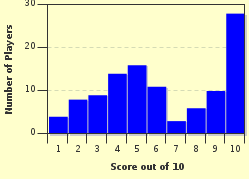Quiz Answer Key and Fun Facts
1. This pattern is practiced by the beginner and is literaly translated: "The Heaven and the Earth". To which pattern am I referring?
2. The pattern Choong-Moo was named after the Great Admiral Yi Sun Sin. Among other things, he was notable for inventing the Kobukson. Essentially, what is the Kobukson the pre-cursor to?
3. The pattern Dan-Gun is named after a person who did something monumental for Korea. What was it that this person did?
4. This man, whom the pattern is named after, was known for assassinating Hirobumi Ito, the first Japanese Governor General in Korea. Who was he?
5. The pattern Hwarang is named after the military youth group that originated in the Silla Dynasty. What do the 29 movements of the pattern represent?
6. The green belt pattern Won-Hyo is named after the monk who introduced what religion to the Silla Dynasty?
7. This pattern is named after Yi-Hwang an authority on Neo-Confucianism. Which pattern is this?
8. Do-San is the pseudonym for the patriot Ahn Chang Ho. What do the 24 movements in the pattern represent?
9. The "Confucius of Korea" was known under which pseudonym?
10. After reaching the black-belt level, there are no more patterns to be learned in Taekwondo.
Source: Author
Bruce007
This quiz was reviewed by FunTrivia editor
Nightmare before going online.
Any errors found in FunTrivia content are routinely corrected through our feedback system.

